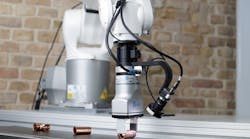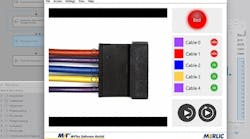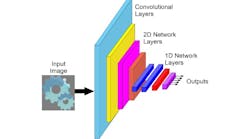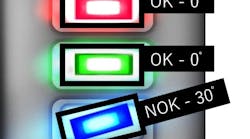Andrew Wilson, Editor, [email protected]
In many military and security applications, there is a need to compress image data to reduce the bandwidth requirements of wireless and networked-based systems. By reducing the amount of data associated with these images, the amount of storage space required can also be minimized, allowing long image sequences to be stored on a single disk.
Of the many types of image-compression methods, perhaps the most common are JPEG and MJPEG. These are based on transforming the original image with a discrete cosine transform (DCT) and then quantizing the transform coefficients. To decompress these images, most commercially available hardware and software implementations use the inverse DCT. In the process of compression and decompression, the 8 × 8 matrix of subimage blocks associated with the transform often results in image block artifacts. To overcome these, more recent developments such as wavelet compression as used in the JPEG 2000 algorithms can be used.
Despite such advances, JPEG and MPEG compression using DCT-based approaches remain the most common methods of image compression. To improve the quality of compressed images, PixonImaging (San Diego, CA, USA; www.pixonimaging.com) has developed a novel method of image decompression known as Pixon Image Re-Expression (PIREX), which reduces blocking and mosquito artifacts and makes decompressed images easier to interpret and more pleasing to the eye. “Rather than use IDCT or other inverse transforms to decompress the image data, the technique finds the simplest image consistent with the compression data,” says Richard Puetter, PixonImaging CEO and chief scientist.
PIREX uses the Pixon method to determine the acceptable level of smoothness for each portion of the image and then ensures that the decompressed image reflects this level of smoothness. “We know that we can find smoother images that compress to the same data set,” says Puetter. “The original source material is such an image. So we just decided to use the Pixon method, which is superb at simplifying images, to help find one.” Selecting the smooth Pixon image naturally avoids the block and mosquito artifacts that would be expected from performing an IDCT on the compressed image.
Currently, the Pixon algorithms run within the IDL software package from ITT Visual Information Solutions (Boulder, CO, USA; www.ittvis.com). To perform Pixon algorithms more rapidly (the Pixon method can also used for image deblurring and denoising), PixonImaging has teamed with DigiVision (San Diego, CA, USA; www.digivision.com), a company that develops special-purpose video hardware. This team has already implemented real-time video-enhancement hardware and now hopes to develop fast image-decompression hardware.
Originally developed by Puetter for astronomical applications, the Pixon method is protected by a number of granted and pending patents owned by the University of California, Pixon LLC, and PixonImaging LLC. PixonImaging, which is seeking companies interested in adopting its decompression technology, either owns or has exclusive license to the Pixon method for image-compression applications.






